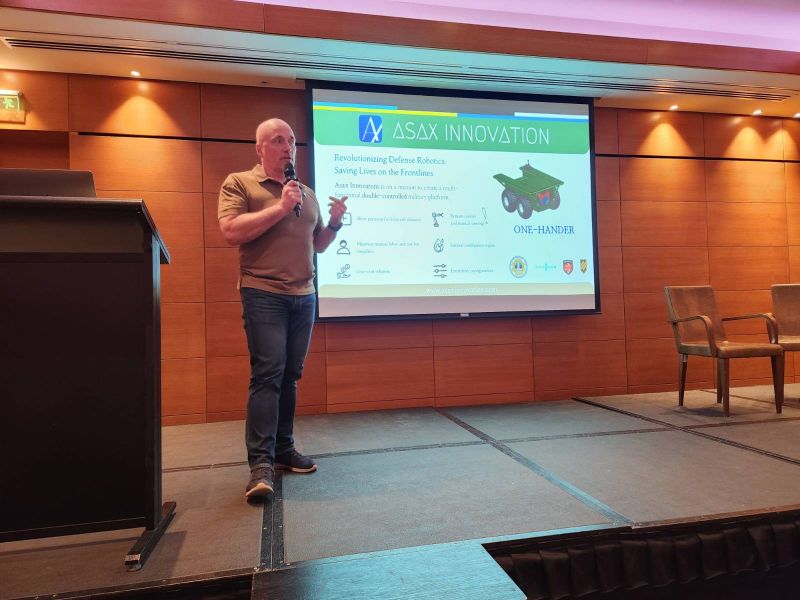Estonian Defense and Aerospace Industry Association’s (EKTL) delegation visited Kyiv where ASAX Innovation introduced its UGV model for the first time. Unexpectedly, our goal was put into words: “To make a machine as cost-saving as possible and yet so simple that even a soldier with basic education could maintain it”.
ASAX INTRODUCED ITS UGV MODEL IN KYIV

After all, the logic is derived from flying drones. An estimated 85% of FPV (first-person view) drones flying in the Ukrainian skies are as primitive as possible and solve 90% of tactical tasks. One company uses about 60 drones per month.
The development of unmanned vehicles is currently characterized by four trends.
-
It is necessary to get rid of Chinese components. This is a very difficult task that can increase the price of drones.
-
Even the simplest FPV drones are further developed to look for ways to make them more resistant to enemy’s electronic warfare (EW) assets.
Development activities are actually quite similar in both Estonia and Ukraine. It is likely that we will eventually move towards greater automation where AI itself selects a target based on a video image and finalises the attack without the help of an operator. Right now, this method does not work for CASEVAC UGVs because the terrains and situations are constantly changing and AI does not yet solve the necessary tasks.
-
There are at least six serious UGV companies in Ukraine, driven by a dual motivation. On the one hand, they want to help win the war but on the other hand, they also see greater business possibilities in the future. Many realize that there isn’t a lot of leeway for price on the cheapest end of the range, thus they try to diversify the product range even more. So, these companies can make both air and ground drones.
-
FPV drones have also triggered a greater development of ground-based drones which are also intended to save the lives of soldiers. FPV drones are currently flown by soldiers. In response, attempts are being made to put soldiers’ tasks on robots. This concerns primarily the evacuation of the wounded, mining/demining, early warning reconnaissance drones, etc.
The equipment is costly but saves a soldier’s life. However, in the absence of sufficient resources, people’s lives are at risk. This is why saving lives requires money. And that’s where our goal comes from.
To make a machine as cost-saving as possible and yet so simple that even a soldier with basic education could maintain it.
